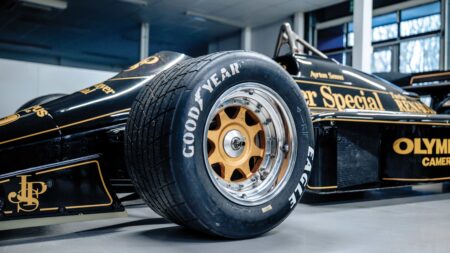
Why Kimi Antonelli was the silver lining in Mercedes' 'worst' F1 race of 2025
As Mercedes dropped down the F1 order in Saudi Arabia, team boss Toto Wolff found a hope in Kimi Antonelli's performance for the team
Friends, countrymen, Romain… Sunday’s 60-lap Nürburgring nail-biter underlined many things, not least that Romain Grosjean is almost as hard to decipher as Lotus team-mate Kimi Räikkönen – albeit for very different reasons. In Germany, though, this most enigmatic of racers was borderline faultless. Or, as his team principal Eric Boullier put it, “He has established a new baseline this weekend…”
Few drivers of the modern era have endured a career quite like that of the Franco-Swiss. To recap, he won the 2007 F3 Euroseries before embarking upon a fast but erratic 18-month GP2 career – during which he was also a nominated Renault F1 reserve. Halfway through 2009, with Nelson Piquet Mk2 seriously underperforming, Grosjean was fast-tracked to an F1 seat and highlighted how badly the sport’s testing restrictions affect young drivers. He wasn’t far off team-mate Fernando Alonso in terms of pure speed – three to four tenths, most of the time – but the car wasn’t great and he combined midfield form with a few notable errors that might have been eliminated had he benefited from the kind of testing privileges available to the likes of Lewis Hamilton just a couple of seasons beforehand.
Grosjean was dropped at the campaign’s end and sought refuge in endurance racing, but soon switched back to single-seaters and won three significant titles – AutoGP, GP2 Asia and the main GP2 Series – in the space of two seasons. As Renault morphed into Lotus, Boullier – who has always had great faith in his semi-compatriot – gave him a second F1 opportunity.
There has never been any doubt about his raw pace, but it’s the other raw stuff that prompted questions. In 2012 he was often devastatingly fast, but sometimes merely devastating. After serving a one-race ban in Italy, the consequence of his role in a first-corner pile-up at Spa, he insisted he would return as a better, wiser driver. In Japan, a couple of races later, he then barged Mark Webber off the track within seconds of the start. At the time Grosjean was concentrating on Sergio Pérez’s Sauber, to his left, and seemed to forget about the corner and cars just ahead. Webber, never one to mince words, referred to his assailant as the “first-lap nutcase”.
At the start of 2013 there were signs of a more restrained Grosjean, but discretion also diluted the spark that once made him such an exciting prospect. He was controlled, but relatively slow. He took a solid third in Bahrain and his trademark vim was apparent in Monaco, but there he was also wild. After the race Boullier was asked whether he’d considered promoting reserve Davide Valsecchi to replace Grosjean and he replied, with half a smile, “Not yet.”
There have been many rumours that patience within Enstone is wearing thin, but on Sunday Grosjean conjured just the right blend of speed and control. Prior to the safety car’s intervention, indeed, he looked the most likely winner. Circumstance and Lotus’s split strategies eventually put paid to that, but a second top-three finish of the season – and, indeed, his first points since Bahrain – yielded hope.
Lotus is unlikely to maintain the same driver line-up next year, not least because Red Bull admits Räikkönen is on a very short list of potential Mark Webber replacements. There are stories that Pastor Maldonado is battering at Lotus’s door with a large sack of Venezuelan oil dollars – presumably enough to buy his way out of a Williams contract, too. You have to wonder how many spare front wing assemblies a Maldonado/Grosjean line-up might consume…
Overall, though, Grosjean’s performance in Germany was part of an uplifting whole. The Nürburgring might be on its knees, in financial terms, but the atmosphere was fabulous, with banner-waving knots of fans gathered around the entrance in the manner of old. The klaxon philharmonic might have become more subdued since Michael Schumacher’s heyday, but this is a circuit at which the past is tastefully preserved and the present very much appreciated.
You might also notice that 670 words have just passed without a single reference to tyres.

As Mercedes dropped down the F1 order in Saudi Arabia, team boss Toto Wolff found a hope in Kimi Antonelli's performance for the team

Zak Brown is still adamant on his approach that Lando Norris and Oscar Piastri are ‘number ones’ at McLaren. But how long will it be before history repeats itself and takes a sour turn?

It's 40 years since Ayrton Senna's incredible first F1 win at Estoril – we captured the brilliant grand prix car he did it in for this month's magazine

Twenty-five years ago, the British GP was the subject of a 'prank' by the powers that be as Bernie Ecclestone and Max Mosley made the BRDC hold the race on Easter Sunday. But the chaos that ensued didn't have the desired effect, as Matt Bishop recalls